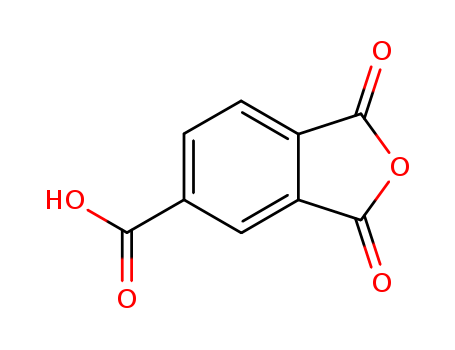|
Cyclically non-specific anti-tumor drug |
It appears as colorless or yellowish or yellowish green crystal or crystalline powder and is odorless. It is insoluble in water and soluble in methanol or ethanol. Its hydrous solution is stable at pH4 but will be subject to rapid decomposition at solution of pH above 7.
Carmustin, together with lomustine, fotemustine and semustine are currently the most widely used cyclically non-specific anti-tumor drugs. It belongs to nitrosourea alkylating agent, although with the role of alkylating agents, has no cross-resistance with general alkylating agent. It is characterized by high lipid solubility, broad anti-tumor spectrum the alkylating agent is generally no cross-resistance with high fat-soluble, broad spectrum anti-tumor, quick onset and easily penetrating through the blood-brain barrier and so on. In the body, it can be decomposed into two active ingredients with one having carbamoyl activity and the other being as alkylating agent that can react with the DNA polymerase to inhibit the synthesis of RNA and DNA. It has effect on the proliferation of cells in each stage while being insensitive to non-proliferating cells. It is easily absorbed orally. It enters the brain at one hour after the intravenous administration. At six hours after administration, the brain drug concentration can reach about 60% to 70% of the plasma concentration with in vivo distribution being the highest in the liver, bile, kidney and spleen. This product has a short half-life being less than 15 minutes. But its metabolites have long half-life, and still have anti-cancer effects with being slowly released after binding to the plasma protein. Therefore, its effect can last long and produce delayed toxicity. This product is rapidly metabolized in the blood after being absorbed with the metabolites excreted slowly and the plasma concentration still remaining high after 48 ??hours. 60% is excreted through urine in the form of metabolites.
It is commonly used in the treatment of primary and secondary brain cancer, Hodgkin's disease, meningeal leukemia. It can also be applied for the treatment of multiple myeloma, lymphoma, breast cancer, lymphoma, melanoma, lung cancer; combination with fluorouracil can be adopted for treating colorectal cancer and gastric cancer; it can be used for treating bronchus lung cancer when being used in combination with methotrexate and cyclophosphamide. Carmustin is also effective in treating cancer of head portion as well as testicular cancer. |
|
Toxic reaction |
1, bone marrow suppression: it is dose-limiting toxicity, exhibiting as severe neutropenia and thrombocytopenia, usually occurs at 3 to 5 weeks after administration and will last for 1 to 3 weeks with the lowest suppression point occurring in 3 to 5 weeks with the ease being slowly than other alkylating agents.
2, gastrointestinal reactions: severe nausea, vomiting usually begins two hours after administration and will last for 4 to 6 hours. Administration of antiemetic agent before the treatment can prevent this.
3 Other reactions: burning sensation can immediately happen at injection site and limbs. Rare toxicity including liver and kidney dysfunction, usually occur upon large doses administration. It has been reported of the occurrence of painless jaundice and hepatic coma as well as pulmonary fibrosis. |
|
Carmustin |
Carmustin belongs to nitrosourea alkylating agents. On the one hand, it binds to DNA through alkylation. On the other hand, it acts on the protein through carbamoylation. It can inhibit DNA polymerase, thus preventing DNA and RNA synthesis with the strongest effect on the G1-s transition period as well as blocking effect on the s-phase, and further enhanced effect on the G2 phase and also certain effect on the G0 phase. It is a cell-cycle non-specific drug. This product high an excellent lipid-solubility, low dissociation and can penetrate through the blood-brain barrier with its metabolites still having anti-cancer effects. It undergoes slow release after binding to protein, thus having a long-lasting efficacy. It has broad anti-tumor spectrum with excellent efficacy in the treatment of meningeal leukemia, brain and spinal cord metastasis of malignant tumors, Hodgkin's disease as well as acute leukemia. It also has certain efficacy on the treatment of breast cancer, lung cancer, bone metastasis, lymphatic sarcoma, melanoma and testicular cancer. It is effective for treating primary and secondary brain tumors. Topical administration has excellent efficacy in treating lymphoma papules. The drug, in combination with fluorouracil, vincristine, dacarbazine, consists FIVB protocol for the treatment of colon; together with fluorouracil and doxorubicin, it form FAB protocol for treating gastric cancer; in combination with vincristine and dacarbazine, it can be used for the treatment of melanoma; in combination with androgen, it can be used for the therapy of breast cancer.
The above information is edited by the chemicalbook of Dai Xiongfeng. |
|
Chemical Properties |
It appears as slightly yellow crystalline powder with the melting point being 30-32 ℃ and becoming oily liquid after melting. It is soluble in methanol, ethanol with a solubility in 50% ethanol being 150mg/ml and the water solubility being 4 mg/ml. It is mostly stable in the aqueous solution of pH4 and petroleum ether. |
|
Uses |
The product is a broad-spectrum anti-cancer drug with excellent efficacy for the treatment of acute leukemia and Hodgkin's disease as well certain efficacy on the treatment of breast cancer, lung cancer and brain cancer as well as the bone metastases of cancer as well. Oral administration for mouse has a LD50 of 19-25mg/kg while the value for intraperitoneal injection is 26mg/kg, 24 mg/kg for subcutaneous injection; rat which is subject to oral administration has a LD50 of 30-40mg/kg. |
|
Production method |
The product has three synthetic routes: 1. take ethylene imine as raw material, go through phosgene condensation to generate bis-(β-chloroethyl) urea, and then generate carmustin via nitrosation; 2.take urea as raw material, go through condensation, ring-opening, chlorination, nitrosation to obtain it; 3.take ethanolamine as raw materials, and generate carmustin through similar processes as methods2. The first method can generate the finished product with just two steps but with its raw material, phosgene and ethyleneimine, both being extremely toxic chemicals, therefore demanding a high-level labor protection and production equipment. The second method has readily available raw materials as well as convenient operation. |
|
Category |
Toxic substances |
|
Toxicity grading |
Highly toxic |
|
Acute toxicity |
Oral-rat LD50: 20 mg/kg; Oral-Mouse LD50: 19 mg/kg. |
|
Hazardous characteristics of explosive |
It may cause deadly harm to the human respiratory system and can cause pulmonary fibrosis, dyspnea and verticillium. |
|
Flammability and hazard characteristics |
Combustion can produce toxic nitrogen oxides, chlorides fumes; it can lead to poisoning: nausea, vomiting, leukopenia and thrombocytopenia as well as bone marrow damage. |
|
Storage characteristics |
Treasury: ventilation, low-temperature and dry; store it separately from food raw materials. |
|
Extinguishing agent |
Dry powder, foam, sand, carbon dioxide, water mist. |
|
Chemical Properties |
Light Yellow Powder |
|
Chemical Properties |
Carmustine is an orange-yellow crystalline solid or powder. |
|
Uses |
An alkylating and carbamoylating nitrosourea compound. It interacts with DNA, RNA and proteins causing DNA interstrand cross linking which is cytotoxic and leads to apoptotic cell death |
|
Uses |
antidepressant |
|
Uses |
Carmustine is a nitrogen mustard β-chloro-nitrosourea compound that is used as an alkylating agent. It forms interstrand crosslinks in DNA, which prevents DNA replication and transcription leading to apoptosis. Carmustine is also reported to inhibit glutathione reductase, thioredoxin reductase, and lipoamide dehydrogenase. Carmustine has been tested in clinical trials as a cytostatic agent for Hodgkin’s and non-Hodgkin’s lymphoma, myeloma, malignant melanoma, glioblastoma, and other brain tumors. |
|
Definition |
ChEBI: A member of the class of N-nitrosoureas that is 1,3-bis(2-chloroethyl)urea in which one of the nitrogens is substituted by a nitroso group. |
|
Brand name |
Bicnu (Bristol-Myers Squibb); Gliadel (Millot Laboratories, France). |
|
General Description |
Orange-yellow solid. |
|
General Description |
Carmustine is available in a 100-mg vial for IV administrationin the treatment of several types of brain tumors,Hodgkin’s and non-Hodgkin’s disease, and multiplemyeloma. The agent is also available as an implantablewafer containing 7.7 mg of drug for intracavity implantationin the treatment of glioblastoma multiforme. Cytotoxicity isassociated with cross-linking of DNA and RNA and carbamoylationof glutathione reductase. Cross-resistance isnot seen with other alkylating agents. The agent is very lipidsoluble and easily crosses the blood-brain barrier, achievingconcentrations greater than 50% of those seen in plasma.Metabolism involves both the nonenzymatic formation ofreactive intermediates that may react with glutathione andother thiol-containing proteins, as well as enzymatic reductivedenitrosation and dechlorination. The half-life of theagent in plasma is short (15–20 minutes) because of rapiddecomposition. Myelosuppression is dose limiting and maypresent as thrombocytopenia, leucopenia, or more rarely asanemia. This is generally seen 24 to 48 days after treatment.Pulmonary toxicity occurs rarely at low doses but at highdoses such as those seen during bone marrow transplantmay present as dyspnea, cough, pulmonary infiltrates, andprogress to respiratory failure. This may be seen years afterthe completion of therapy. Other toxicities include nausea,vomiting, pain at the injection site, impotence, sterility,amenorrhea, and infertility. Hepatotoxicity may initiallypresent as elevations in serum transaminase levels. There isalso an increased risk of secondary cancers as is often seenwith the alkylating agents. |
|
Air & Water Reactions |
Insoluble in water. |
|
Reactivity Profile |
Carmustin decomposes rapidly in acid and in solutions above pH 7; most stable in petroleum ether or aqueous solution at pH 4. |
|
Hazard |
Extremely toxic, central nervous system depression, pulmonary fibrosis, renal and hepatic damage, cytotoxic, immunosuppressive, carcino- gen. |
|
Fire Hazard |
Flash point data for Carmustin are not available. Carmustin is probably combustible. |
|
Potential Exposure |
BCNU has been used since 1971 as an antineoplastic agent in the treatment of Hodgkin’slymphoma; multiple meyloma; and primary or metastatic brain tumors. It also has been reported to have antiviral, antibacterial, and antifungal activity, but no evidence was found that it is used in these ways. BCNU is not known to be naturally occurring. Health professionals who handle this drug (for example, pharmacists, nurses, and physicians) may possibly be exposed to BCNU during drug preparation, administration, or cleanup; however, the risks can be avoided through use of containment equipment and proper work practices |
|
Shipping |
UN3249 Medicine, solid, toxic, n.o.s., Hazard Class: 6.1; Labels: 6.1-Poisonous materials. UN2811 Toxic solids, organic, n.o.s., Hazard Class: 6.1; Labels: 6.1- Poisonous materials, Technical Name Required. |
|
Incompatibilities |
Acids and acid solutions above pH 7 cause rapid decomposition. Most stable at pH 4 in aqueous solution or petroleum ether. |
|
Waste Disposal |
It is inappropriate and possibly dangerous to the environment to dispose of expired or waste pharmaceuticals by flushing them down the toilet or discarding them to the trash. Household quantities of expired or waste pharmaceuticals may be mixed with wet cat litter or coffee grounds, double-bagged in plastic, discard in trash. Larger quantities shall carefully take into consideration applicable DEA, EPA, and FDA regulations. If possible return the pharmaceutical to the manufacturer for proper disposal being careful to properly label and securely package the material. Alternatively, the waste pharmaceutical shall be labeled, securely packaged and transported by a state licensed medical waste contractor to dispose by burial in a licensed hazardous or toxic waste landfill or incinerator. |








